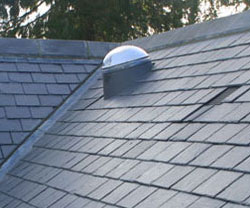Gravity Loft Ventilation
If you have a loft space in your home, you need to make sure that it’s properly ventilated. Although taking care of this issue may not seem like a priority, there are two important reasons to avoid putting off this upgrade. The first reason is because of the impact that excess heat can have on the structural elements of your loft and the rest of your home. When the air in a loft doesn’t have anywhere to go, it can reach extremely high temperatures.
Because structural elements aren’t designed to deal with this type of heat, this air can actually warp them. The other reason that you need to take loft ventilation seriously is because of mold growth. When air stagnates in your loft, it can cause moisture to collect. Once this occurs, mold can begin growing and spreading in as little as three days. In addition to causing damage to your walls and other areas of your home, mold can lower your indoor air quality.
Is Gravity Loft Ventilation Effective?
Since it’s easy to see why loft ventilation is actually a significant issue, you’re probably wondering about the best way to deal with it. Gravity loft ventilation is a natural method that is quite effective. One of the big benefits of this type of loft ventilation is it doesn’t require any energy. And because it will lower the temperature in your loft, it can actually reduce the amount of energy you consume on a monthly basis. Another reason this form of ventilation is so appealing is because it isn’t very expensive to implement. All that’s needed are intake and exhaust vents.
How Does It Compare to Assisted Ventilation?
Some homeowners choose assisted ventilation instead of 100% gravity loft ventilation. The main difference between these two methods is instead of simply relying on pressure differences, assisted ventilation takes advantage of wind to help move air throughout a loft. The reason some homeowners opt for this type of ventilation is because it can allow them to use less space to move the same amount of air as gravity ventilation. However, the downside is that because wind movement usually varies quite a bit, properly placing these vents can be very challenging.
What’s the Difference Between Gravity and Power Loft Ventilation?
Power loft ventilation can be accomplished by using:
- Loft fans
- Power loft ventilators
- A combination of both methods

Categories
- Home
- Loft Ventilation Products
- Ceiling Loft Ventilation
- Gravity Loft Ventilation
- Lindab Ventilation
- Loft Eaves Ventilation
- Loft Rotary Vents
- Loft Ventilation Fans
- Loft Ventilation Grilles
- Loft Ventilation Pipes
- Loft Ventilation Systems
- Roof Ventilation Tiles
- Small Loft Vents
- Loft Ventilation Companies
- Loft Ventilation Information
- Types Of Loft Ventilation
